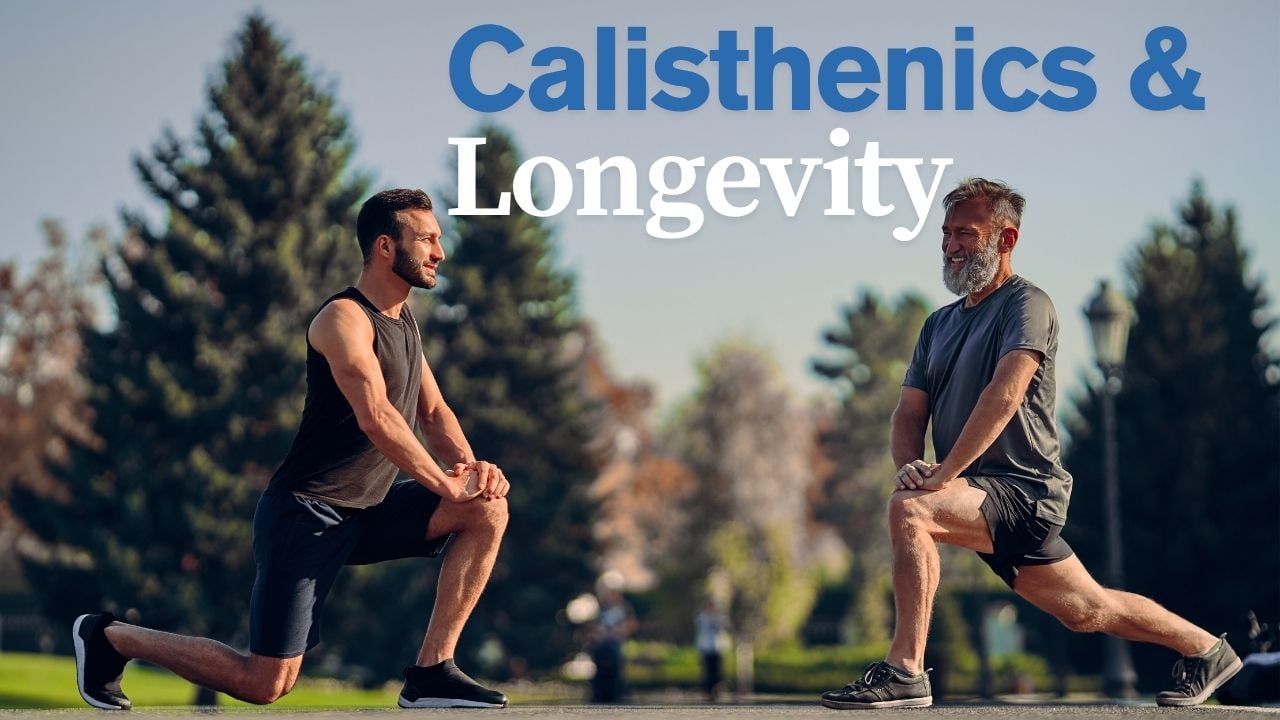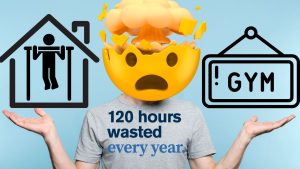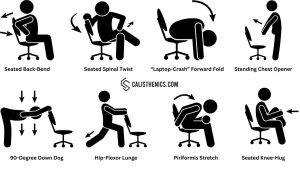Why I Went Down This Rabbit Hole
A few months ago a reader emailed me a blunt question:
“I’m 47, busy, and not convinced push-ups will let me see my grand-kids. Does exercise truly add years to life, or is the benefit over-hyped?”
That email hit me harder than a weighted dip. I’ve coached athletes, sedentary desk jockeys, and silver-haired grandparents, and I’ve felt the transformative power of movement in my own body. But feelings aren’t facts. So I brewed a vat of coffee, pulled every meta-analysis I could find, and stuffed my Kindle with longevity papers on the flight to a coaching seminar in Berlin.
Fifty-plus research PDFs later, my verdict was clear—and honestly a little awe-inspiring. Regular exercise isn’t just a “nice-to-have” habit; it’s the closest thing we have to a proven life-extender in a pill-free form. Below is the synthesis of that deep research, seasoned with my own training anecdotes, a dash of surprise, and practical advice you can act on today—whether your jam is classic body-weight calisthenics, heart-pounding hill sprints, or strapping on a 15-kilo vest for weighted pull-ups.
(Word to the science-savvy: every statement that sounds too good to be true traces back to peer-reviewed cohort studies, randomized trials, or official health guidelines. I’ve linked the key papers at the end.)
1. Exercise, Longevity, and Health Span—Defining the Terms
There are two timelines running through your life:
- Lifespan – sheer years you remain alive.
- Health span – the portion of those years you stay vibrant, mobile, pain-free, and mentally sharp.
Living to 90 bedridden is not the goal. Living to 90 doing weighted pistol squats in the park? Sign me up.
2. What the Evidence Says (Spoiler: It’s Overwhelmingly Positive)
Researchers have tracked hundreds of thousands of adults for decades. When they plot weekly activity minutes against death rates on a graph, the sedentary cluster crowds the high-risk corner, while the movers drift downward into the safety zone.
- Hit the basic aerobic guideline (150 min of moderate effort like brisk walking or 75 min of vigorous effort like running) and your risk of dying from any cause drops roughly 20–30 %.
- Double or quadruple that volume and the risk plunges another 5–10 %. The sweet spot appears to be 300–600 min of moderate cardio (or half that in hard-charging effort).
- Add resistance training twice a week and all-cause mortality sinks an extra 15–27 % compared to people who never pick up a weight—or their own body weight.
When I read those numbers I literally blurted “Holy pull-up bar!” on the plane (apologies to the gentleman in seat 12B). These aren’t marginal gains; they’re decade-adding gains.
3. Aerobic Functional Training: Fuel for Your Cardiovascular “Engine”
Back in my undergrad days I measured students’ VO₂max for a physiology lab. The fittest guys and gals had insane lung capacity and their projected lifespans, based on long-term data, were five years longer than the low-fit cohort. That gap should jolt anyone who treats cardio like a tax audit—unpleasant but avoidable.
How aerobic work extends life
- Lowers resting blood pressure and bad LDL cholesterol.
- Improves insulin sensitivity (cutting Type 2 diabetes risk).
- Quells systemic inflammation that accelerates aging.
- Boosts brain-derived neurotrophic factor (BDNF) — think “Miracle-Gro” for neurons.
Real-life example: My 58-year-old client Jana shifted from zero workouts to three 40-minute Nordic walking loops weekly. Six months in, her resting heart rate slid from 82 bpm to 64 bpm, and her physician cut her blood-pressure meds in half. She now jogs the downhills—because walking felt too easy.
4. Calisthenics & Weighted Calisthenics: The Underrated Muscle-Preserving Medicine
Muscle mass isn’t just vanity weight; it’s metabolic gold. After 30, we all lose 3–8 % of lean tissue per decade unless we fight back. Calisthenics is my favorite weapon because it scales endlessly: elevate your feet in push-ups, slow the eccentric, pause at the bottom, slap on a vest—your body never outgrows the challenge.
Why muscle keeps you alive longer:
- Higher glucose uptake = lower diabetes risk.
- Strong legs and core = fewer falls and hip fractures (a major killer in seniors).
- Myokines released from contracting muscle dampen chronic inflammation.
Personal proof: I set a goal last year to perform a strict one-arm chin-up before my 40th birthday. The weighted progressions (15 kg vest, then 20 kg, then 25 kg) packed 3 kg of lean mass onto my lats and biceps while my fasting glucose dropped from 92 mg/dL to 85 mg/dL—despite zero change in diet. When lab results hit my inbox I fist-pumped so hard I nearly dislocated my shoulder (don’t worry, nearly).
5. Combining Cardio and Strength: 1 + 1 = 3
If aerobic training cleans your engine and calisthenics upgrades the chassis, doing both turns you into a hybrid super-car. Meta-analyses show the biggest longevity bump (35–42 % lower mortality) in people who regularly do each modality—not one or the other.
Sample hybrid week (feel free to steal):
| Day | Morning | Evening |
| Mon | 20-min mobility + 30-min brisk walk | Full-body calisthenics circuit (push-ups, inverted rows, body-weight squats) |
| Tue | Interval run: 6×2 min fast / 2 min easy | Rest |
| Wed | Core + handstand practice | Weighted dip & pull-up supersets |
| Thu | 45-min moderate cycle commute | Yoga or stretch |
| Fri | Hill sprints 10×30 sec | Rest |
| Sat | Park workout: pistol squat practice, muscle-up drills | Light walk with family |
| Sun | Rest (nature hike optional) | — |
That’s roughly 170 min of moderate cardio, 36 min of vigorous effort, and three muscle-stimulating sessions—squarely in the scientific sweet spot.
Looking for a one-stop roundup of the top no-cost routines? I’ve already done the legwork for you—head straight to Best Free Calisthenics Programs, where I break down the smartest beginner plans and show exactly how to pick the right one for your goals, gear, and schedule. Once you’ve chosen a plan, feel free to explore our calisthenics exercise library for individual moves filtered by muscle group or browse fully built templates in the calisthenics workouts section to keep your training fresh.
6. Age Matters—but Not the Way You Think
Youth & Teens
Active kids build higher peak bone mass and healthier arteries that pay dividends 40 years later. One long-term study found that teens who were in the top fitness quartile had a dramatically lower risk of premature death by middle age. I coach a youth calisthenics class every Tuesday, and watching 13-year-olds nail their first pull-up reminds me we’re literally carving longevity pathways into their future bodies.
Mid-Life
Cardio fitness at 45 is a potent predictor of lifespan. The Copenhagen City Heart Study followed men for 46 years: high-fit dudes lived about 5 years longer than low-fit peers. That stat motivated me to maintain a weekly 10-k tempo run even during busy launch weeks for this blog.
Seniors
Start late, still great. Chinese adults age 60 + who adopted exercise and other healthy habits added an average 4.5 years of life—even when their DNA predicted shorter runs. That stat echoes what I see every Wednesday at the community center, where septuagenarians practice chair-assisted squats, band rows, and wall push-ups. Six months in, one gentleman tore up his knee-replacement consult because the ache that once woke him at night simply vanished. Health span in action.
If you—or your parents—worry calisthenics is “too intense,” relax: the discipline scales beautifully. Elevating hands on a countertop turns push-ups into gentle chest presses; a sturdy doorframe morphs into a supported row station. Add a resistance band and you’ve built a full-body gym that protects joints, sharpens balance, and sparks the kind of muscle-preserving magic that keeps you carrying groceries at 85. For a full playbook of senior-friendly progressions, safety cues, and week-by-week templates, dive into my detailed guide: Calisthenics for Seniors: A Great Way to Build Strength at Home.
7. Wait, What About Aunt Marta Who Smokes, Never Exercises, and Is 102?
Every Thanksgiving my family trots out stories of Aunt Marta (actually my grandmother’s cousin) who “never exercised a day in her life” yet danced at her 100th birthday. Here’s why such tales don’t invalidate the research:
- Genetic outliers – Exceptional longevity is ~70 % genetics past age 100. Marta may carry protective variants in APOE or FOXO3.
- Incidental activity – She raised chickens, hauled water, gardened daily. That’s functional exercise in disguise.
- Survivorship bias – We hear about the lucky exceptions; thousands of sedentary peers died younger and silent.
So yes, some people roll the genetic dice and win. The rest of us shouldn’t bank our retirement on luck.
8. Is There a Downside? The “Too Much Exercise” Question
Extreme volumes (think professional ultra-triathletes logging 25 hours a week) can bend the risk curve back up slightly—mostly via overuse injuries, atrial fibrillation, and suppressed immunity. I flirted with this line training for a 24-hour pull-up charity event: my sleep tanked, resting HR spiked, and I caught two colds in a month. Lesson learned: more is not endlessly better. Aim for progress, not obliteration.
9. Crafting Your Longevity Prescription
a) Nail the Basics First
- 150 min moderate or 75 min vigorous cardio per week. Brisk walking counts.
- 2 strength sessions targeting all major muscle groups. Calisthenics is perfect here.
b) Progress Gradually
New to push-ups? Start on a bench. Can’t jog? Try power walking. When the easy version feels breezy, scale up: deeper range, steeper hills, or a weight vest.
c) Sprinkle Movement Snacks
Stand-up desk breaks, five air squats every hour, walking phone meetings—tiny bites of motion thwart the metabolic sludge of prolonged sitting. My watch buzzes hourly; I obey like Pavlov’s dog, often sliding in a brief Grease-the-Groove set—say, three easy pull-ups or a handful of incline push-ups. Because each effort stays well below failure, it sharpens neural pathways and silently piles on “muscle minutes” with virtually zero soreness. If you want a step-by-step template (and common pitfalls to dodge), check out my full guide: What Is Grease the Groove?.
d) Protect the Engine
Warm up, learn proper form (YouTube is great, a qualified coach is better), schedule rest days, and sleep 7–9 hours. Recovery is where the magic (mitochondrial biogenesis, collagen repair, myofibril growth) happens.
10. A Personal Case Study: My Decade Journey
At 30 I could bang out 25 push-ups but wheezed after a single flight of stairs—desk-job life had me soft. I committed to the classic “Grease the Groove” method: five mini-sets of pull-ups scattered through the day. Month one: elbows ached. Month four: first legit muscle-up. Year three: I was hosting outdoor workshops and had a resting heart rate of 52 bpm. Now, approaching 40, DEXA scans show bone density in the 99th percentile for my age, and my 5-year life-insurance premium dropped because my biological age markers looked ten years younger. I’m not bragging—okay, maybe a little—but sharing because every metric the longevity literature promises showed up in my labs, joints, and mood. The science tracks with lived experience.
11. Surprising Nuggets I Didn’t Expect
- 60 minutes of weekly strength work is the Goldilocks dose. Beyond that, returns flatten.
- “Active couch potatoes” exist—people who do a 30-min run then sit 10 hours. Their mortality risk is still higher than folks who sprinkle movement all day. That floored me (I promptly reorganized my writing setup to a convertible standing desk).
- VO₂max improvements equate to literal days of extra life per small uptick. Training zones suddenly feel like time-bank deposits.
12. FAQs I Get from Clients
Q: Will I wear out my joints with weighted calisthenics?
A: When you progress sensibly and respect connective-tissue adaptation time (add no more than ~10 % load per week), injury rates are low—arguably lower than heavy barbell lifting because body-weight patterns are joint-friendly.
Q: I’m 65 and never done pull-ups. Too late?
A: Never. Start with scapular hangs and band-assisted pull-downs. My oldest client to notch a chin-up was 72.
Q: Do I need supplements?
A: Not for longevity per se. Creatine can aid strength training and maybe cognition, but whole foods + adequate protein (1.2–1.6 g/kg) cover 90 % of needs.
13. Putting It All Together—Your Next Week Could Look Like This
- Monday: 30-min brisk walk + beginner calisthenics (wall push-ups, chair squats, bird-dogs).
- Tuesday: 25-min interval bike ride.
- Wednesday: Mobility + core circuit (plank series, side planks, glute bridges).
- Thursday: Restorative yoga.
- Friday: Weighted vest session—push-ups, squats, rows (3×8 each).
- Saturday: 60-min hike with friends; every trail marker, drop for 5 lunges.
- Sunday: Full rest—play with grand-kids, prep healthy meals.
Adjust volume to your fitness, but pattern the week on consistent movement, mixed intensities, and at least two strength hits.
14. The Bigger Picture: Exercise as Cornerstone, Not Cure-All
Longevity is a symphony—nutrition, sleep, social connections, purpose, stress management. Exercise is the percussion section keeping the beat. Neglect it and the composition falls apart. Combine it with a colorful Mediterranean-ish diet, seven-hour nights of sleep, and meaningful relationships, and you stack health span odds so far in your favor that actuarial tables start to look like fiction.
Final Takeaway
If you remember one line, let it be this:
Move often, lift your body (or something heavier) twice a week, and you’ll likely add both years to your life and life to your years.
Your pull-up bar, trail shoes, or shiny new weight vest are more than fitness toys—they’re time machines propelling you into a future where you’re still the hero of your own story. I’ll see you at the park in 2065; first to ten muscle-ups buys the cold-brew.
Resources and Further Reading
- U.S. Physical Activity Guidelines Advisory Committee Report (2nd edition, 2018) – U.S. Department of Health & Human Services.
Download the full PDF - Lee D-H, et al. “Long-Term Leisure-Time Physical Activity Intensity and All-Cause Mortality.” Circulation (2022).
PubMed link - Momma H, et al. “Muscle-Strengthening Activities and Mortality Risk: A Systematic Review and Meta-analysis of Prospective Cohort Studies.” British Journal of Sports Medicine 56(13): 755-763 (2022).
Journal article - Schnohr P, et al. “Dose of Jogging and Long-Term Mortality: The Copenhagen City Heart Study.” Journal of the American College of Cardiology 65(5): 411-419 (2015).
Article link - Zhou Y, et al. “Healthy Lifestyle Factors Offset Genetic Risk for Shorter Lifespan in Older Chinese Adults.” BMJ (2023).
Open-access full text - Buettner D & Skemp S. “Lessons Learned From Blue Zones, Lifestyle Medicine Pillars and Beyond: An Update on the Contributions of Behavior and Genetics to Well-being and Longevity.” American Journal of Lifestyle Medicine 16(6): 602-612 (2021).
DOI: 10.1177/15598276221118494




